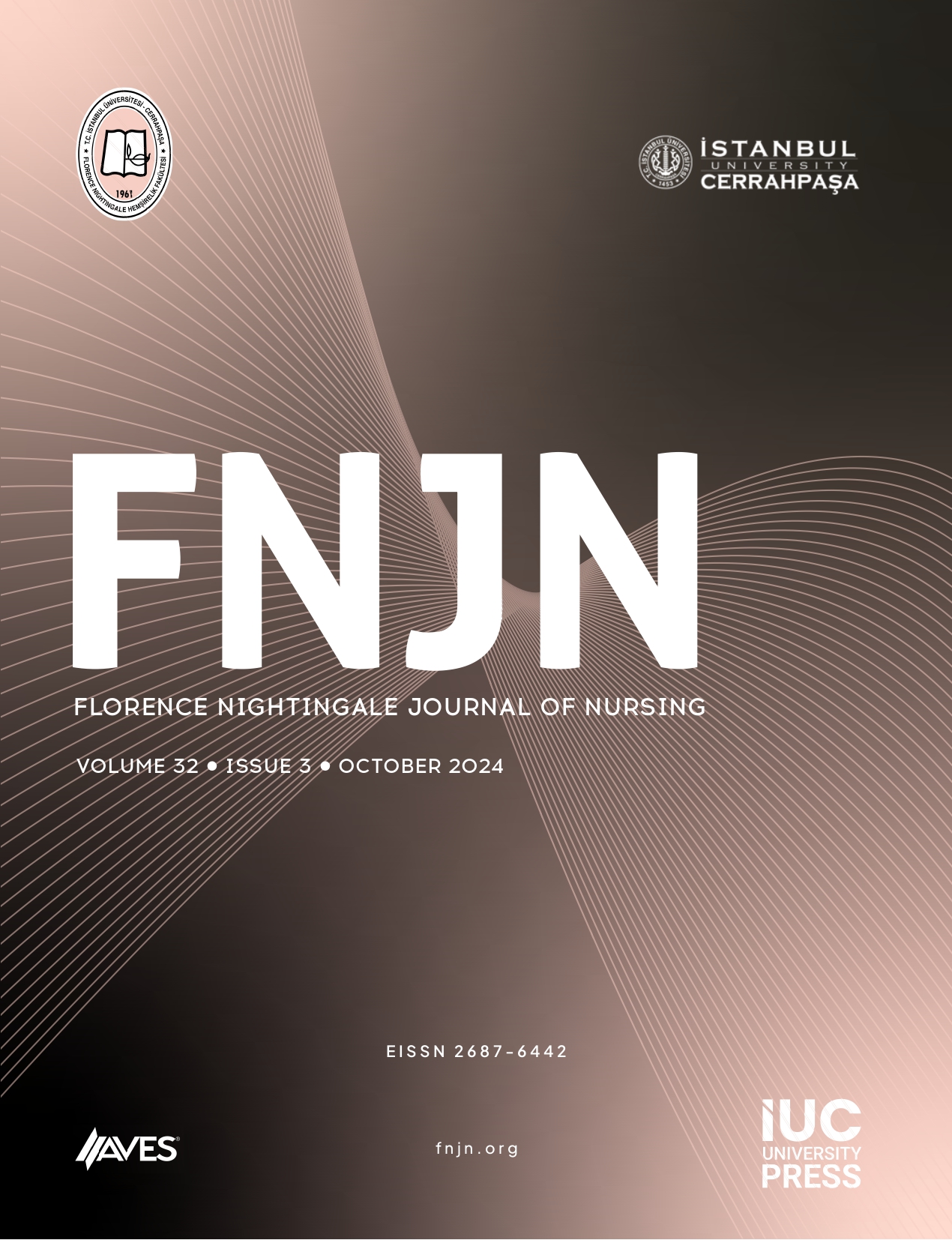Aim: The study was conducted experimentally with pre–post tests and a control group to determine the effect of Behavioral System Model based education that given by the creative drama method on adolescent bullying.
Method: As a result of the power analysis performed, eighty-three students (43 in study group, 40 in control group) attending 7th degree were recruited. Education is given in nine sessions with creative drama method. Data were collected with Individual Information Form, Traditional Peer Bullying Scale, Problem-Solving Inventory for Children, and the Empathy Index for Children. Data were analyzed with decrease/increase in percentage, Cronbach α, chi-square, two way/two factor repeated measures analysis of variance (Post-Hoc: Bonferroni) and Mann–Whitney U tests.
Results: The decrease in percentage in the mean Traditional Peer Bullying Scale scores of study group students was higher than those of control group (p<0.05). Mean pre-education 1st measurement Traditional Peer Bullying Scale scores of study group students were reduced in the post-education 2nd and 3rd measurements (p<0.05). The increase in percentage in the mean Problem-Solving Inventory for Children and Empathy Index for Children scores of study group students was higher than those of control group (p<0.05). The mean pre-education 1st measurement scores of PSIC and Empathy Index for Children was increased in post-education 2nd and 3rd measurements (p<0.05).
Conclusion: Drama education is effective on prevention of bullying, and that may be used in prevention programs.
Davranışsal Sistem Modeline Temellendirilmiş Hemşirelik Girişiminin Ergen Zorbalığına Etkisi
Amaç: Araştırma, yaratıcı drama yöntemiyle verilen Davranışsal Sistem Modeli temelli eğitimin ergen zorbalığına etkisinin belirlenmesi amacıyla ön-son test, kontrol gruplu, yarı-deneysel olarak yapılmıştır.
Yöntem: Yapılan güç analizi sonucunda çalışmaya 7. sınıfa devam eden 83 (43 çalışma, 40 kontrol grubu) öğrenci alınmıştır. Yaratıcı drama yöntemine göre düzenlenmiş eğitimler dokuz oturumda yapılmıştır. Veriler kişisel bilgi formu, Geleneksel Akran Zorbalığı Ölçeği, Çocuklar İçin Problem Çözme Envanteri ve Çocuklar İçin Empati Ölçeği kullanılarak toplanmıştır. Veriler, tanımlayıcı istatistikler, yüzde artma/azalma, Cronbach α, ki-kare, iki yönlü/iki faktörlü tekrarlı ölçümlerde varyans analizi (Post-Hoc: Bonferroni) ve Mann Whitney U testleri kullanılarak değerlendirilmiştir.
Bulgular: Çalışma grubundaki öğrencilerin Geleneksel Akran Zorbalığı Ölçeği puan ortalamalarındaki yüzde azalmanın kontrol grubuna göre daha fazla olduğu saptanmıştır (p<0,05). Çalışma grubundaki öğrencilerin Geleneksel Akran Zorbalığı Ölçeği puan ortalamalarının eğitim öncesi 1. ölçüme göre eğitim sonrası 2. ve 3. ölçümlerde azaldığı belirlenmiştir (p<0.05). Çalışma grubundaki öğrencilerin Çocuklar İçin Problem Çözme Envanteri ve Çocuklar İçin Empati Ölçeği puan ortalamalarındaki yüzde artmanın kontrol grubuna göre daha fazla olduğu saptanmıştır (p<0,05). Çalışma grubundaki öğrencilerin Çocuklar İçin Problem Çözme Envanteri ve Çocuklar İçin Empati Ölçeği puan ortalamalarının eğitim öncesi 1. ölçüme göre eğitim sonrası 2. ve 3. ölçümlerde arttığı belirlenmiştir (p<0,05).
Sonuç: Drama yöntemiyle verilen eğitimin zorbalığı önlemede etkili olduğu ve önleme programlarında kullanılabileceği sonucuna ulaşılmıştır.
Cite this article as: Evgin, D., Bayat, M. (2020). The effect of Behavioral System Model Based nursing intervention on adolescent bullying. Florence Nightingale Journal of Nursing, 28(1), 71-82.




.png)
.png)